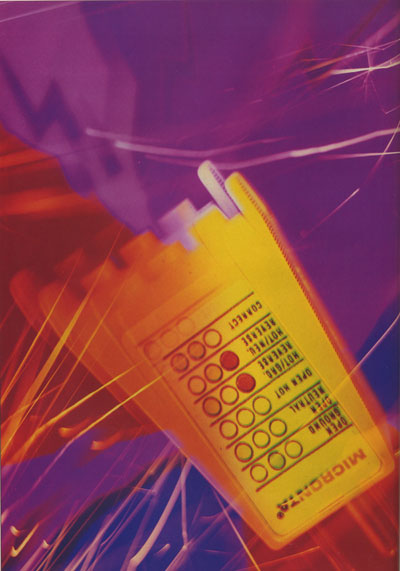
On Solid Ground,
Part 2
Don't let a humming sound system sing backup on your hit-to-be.
|
On Solid Ground,Part 2
Don't let a humming sound system sing backup on your hit-to-be. |
|
A friend of ours recently decided to put together his own recording studio. He spent hours talking to salespeople at the local pro audio store and left with about 30 boxes of equipment. When he set up his studio, he didn't even bother to read the manuals. After all, the salesman had already told him everything he needed to know to get started. He took an old equipment rack and threw most of his outboard equipment into it. Next, he put the mixer and tape deck up on an old table, connected his audio lines with a bunch of guitar cords, wired up his speakers and power amp, and plugged the AC into whatever outlets he could find. Then he said, "This is it, I'm ready to make music!" Not! Sure, he was able to turn on his keyboards and drum machine and get a sound, but the sound that came out of his speakers was like no patch he had ever heard before. He had the hum from hell, and it was coming from every piece of equipment he turned on. At first, he thought that crook of a salesman sold him a bunch of cheap gear. Unfortunately, our friend didn't realize that any piece of gear sounds like garbage if it's improperly and poorly grounded. Ground Loops Having established a safe electrical-system ground, turn your attention to preventing ground loops. A ground loop is formed when equipment is connected to ground through more than one path (see Fig. 1). The situation is complicated by the fact that op-amp inputs, bypass capacitors, and other internal components connect to ground by way of the equipment chassis. In poorly designed gear, internal ground loops can occur. If an unwanted signal (RFI, noise, etc.) gets into the ground line, especially in preamps and other high-gain circuits, it could get into the audio path as well. Then it travels between components, gets amplified, and makes |
your trained ears extremely unhappy. Sometimes there's nothing you can do about this situation short of having a professional redesign the device's internal grounding or not using the equipment at all.
Once a ground loop forms, it acts as an antenna, aggravating the situation by picking up radio-frequency interference (RFI) and electromagnetic interference (EMI) from nearby strong AC fields. Ideally, an audio-cable shield doesn't carry signals, but in real-world situations, signals flow through the shield. This creates lines of force that can be induced into the hot lead of other cables, causing noise. Rack-Mounting |
Neal Brighton is an independent producer/engineer and co-owner of Sound and Vision studios in San Francisco. A Buddhist seer once told EM managing editor Steve O that his purpose in this incarnation was to learn about power. He never understood until now. |
|